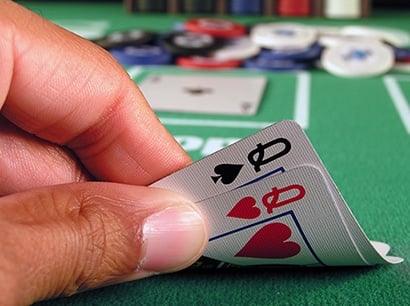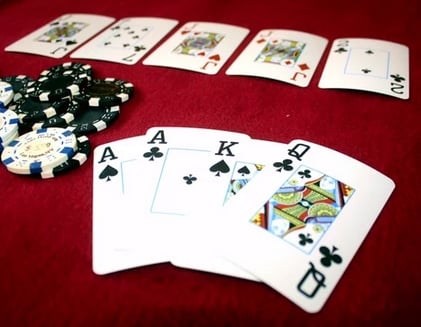The Beginners Guide Series: Poker without Texas Hold’em

Poker is one of the most popular card games in the world, and it’s easy to see why. This exciting game greatly appeals to all players, from experienced gamblers to recreational players who enjoy testing their skill and luck against friends or online opponents. It’s also incredibly lucrative, with famous tournaments like the World Series of Poker sporting million-dollar prize pools. Great poker players can make a living off the game, using their skill to profit over time despite the game’s element of luck. Another reason for poker’s insane popularity in the modern era is the prevalence of online poker. Online poker makes everything more convenient, allowing players to find games easily and even make a living from the comfort of their homes.
One of the primary selling points of poker is the amount of variety it offers. There are countless varieties of poker, from traditional ones like Hold’em to more obscure ones like Razz and Pineapple. Having this much variety in game types is fantastic for two reasons. First, it dramatically increases poker’s appeal to different kinds of people. Players looking for simplicity can choose game types like Seven Card Stud, while players who want a challenge can play complex game types like HORSE. Secondly, the variety keeps even experienced players invested. No matter how fun a game is, it can feel boring when it is overplayed. Poker’s variants provide ways to spice things up, ensuring there is always another option when other formats get boring. This poker guide will cover several common poker alternatives to Texas Hold’em, give a brief overview of each one and the basic rules on how to play them.

Omaha
Omaha is the world’s second-most popular form of poker and bears many similarities to Hold’em. Most of the mechanics are the same, but there are a few significant differences. The first is the number of cards the players are given and the way that hands are created. In Omaha, every player is dealt four hole cards, twice as many as Hold’em. Players must use exactly two of these cards and three of the community cards to make their five-card hand, unlike Hold’em, where you can use any combination. This change dramatically impacts Omaha’s strategy because it gives many hands the potential to improve.
The next major difference is the betting format. Unlike Hold’em, where the most popular betting structure is No Limit, Omaha usually uses the Pot Limit betting structure. This means that players can only bet up to the current size of the pot, plus any active bets they are facing. If the pot is $100 and the current bet is $20, the maximum raise can be calculated by adding this to the amount required to call, resulting in a max-raise of $140. This betting limit makes for a slightly less aggressive betting than in No Limit Hold’em.

Seven Card Stud
Before the rise of Texas Hold’em, Seven Card Stud was the most popular form of poker in the US. At the start of the game, each player is dealt two cards face down that only they can see, along with one face up. A round of betting occurs, then every active player receives three more face-up cards and one face-down card, with a betting round after each card is dealt. After the final round of betting, the showdown occurs among the remaining players, when they turn up their face-down cards and select their best five card hand. The best hand wins.
Seven Card Stud uses traditional poker hand rankings and antes, which are fixed bets every player must pay, instead of blinds. In the first betting round, the player with the lowest-ranked face-up card makes a forced bet known as the bring-in, which is usually half the size of a small bet. After the initial round of betting, the first player to act is always the player with the highest-ranked face-up hand. Seven Card Stud mainly uses a fixed betting limit, which is incredibly restrictive compared to pot limit or no limit formats. There are only two bet sizes, the small bet, which players must use during the first two rounds of betting and the big bet, which is double the small bet and is used from the third betting round onwards.

Razz
Razz poker is a variant of Seven Card Stud with a twist. It’s a lowball poker game in which traditional hand rankings are reversed, with the weakest hands becoming the strongest and vice versa. There is a bit more nuance than merely inverting the traditional rankings, using what is known as the “Ace-to-Five” or “California” ranking system. Aces are always used as ones, straights and flushes do not affect a hand’s strength, and hands without a pair or better are ranked by the highest card. A hand of 7-5-4-3-2 is considered a “7-low,” and a hand of 6-5-4-3-2 is considered a “6-low” and is stronger. Following these rules, 5-4-3-2-A is the best hand in Razz. It also has inverted rules regarding the bring-in, with the player with the traditionally highest-ranked face-up card making the bring-in bet and the player with the traditionally lowest-ranked face-up hand beginning the action in the subsequent rounds.
HORSE
HORSE is an exceptionally complex form of poker usually only seen in high-stakes casino games or tournaments. It combines five forms of poker: Hold’em, Omaha hi-low eights or better, Razz, Seven Card Stud, and Stud hi-low Eights or better. It’s most commonly played with a fixed-limit betting structure and gameplay cycles between all five modes over time. With players having to master five different variants, it’s often considered one of the most skill-intensive poker variants, even by pros like Daniel Negreanu.
Crazy Pineapple
Last but not least, Crazy Pineapple is an offshoot of Texas Hold’em that’s perfect for home games. It shares many of the mechanics and only has one notable difference that significantly increases the chance of players drawing monster hands. Each player is dealt three cards and, after seeing the flop, every player must choose one hole card to muck. With the extra hidden card, games get intense as everyone has a higher chance of having a strong hand. Players must use their wits to outsmart their opponents.
